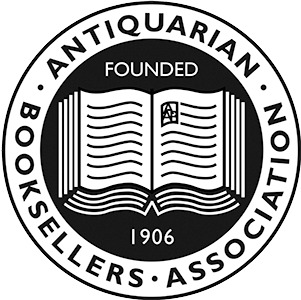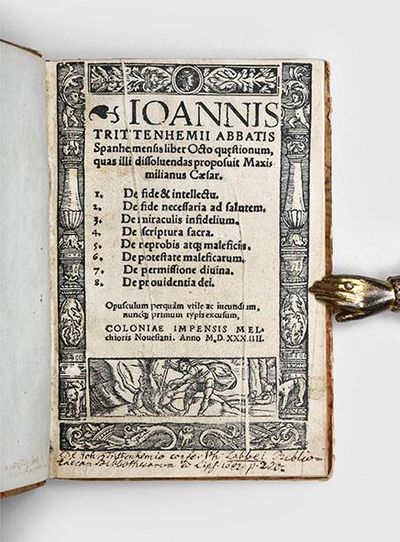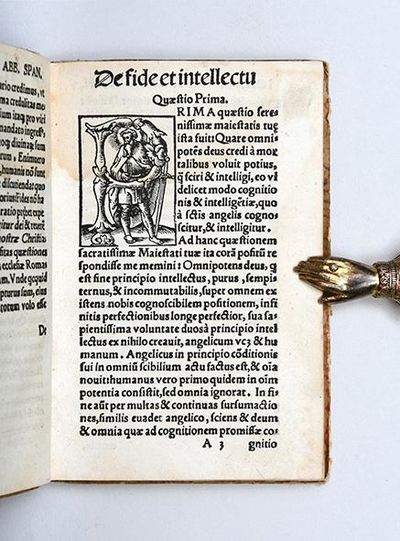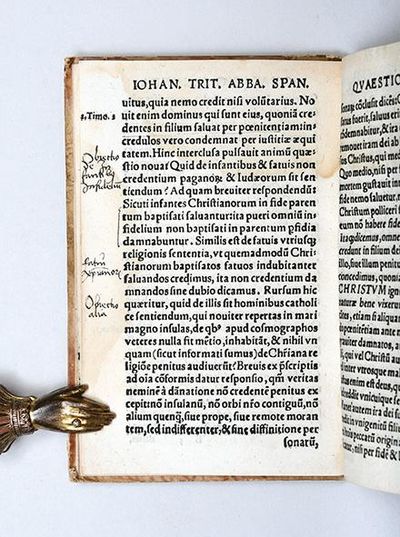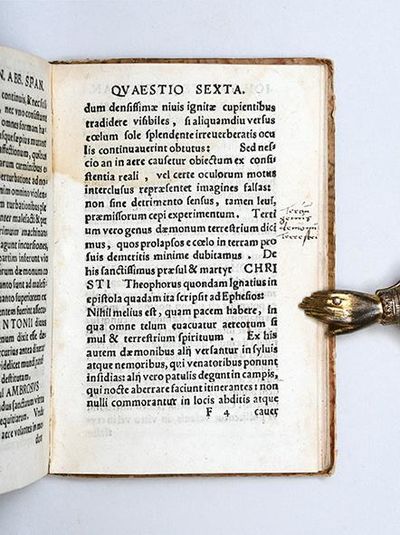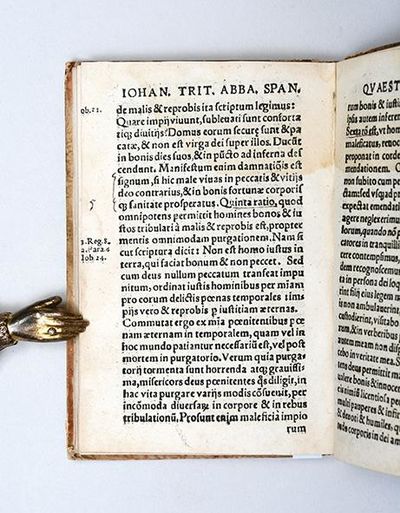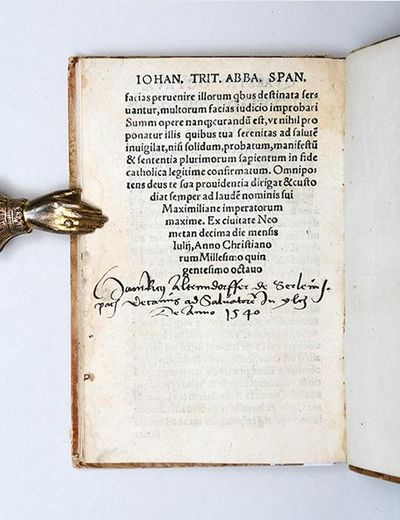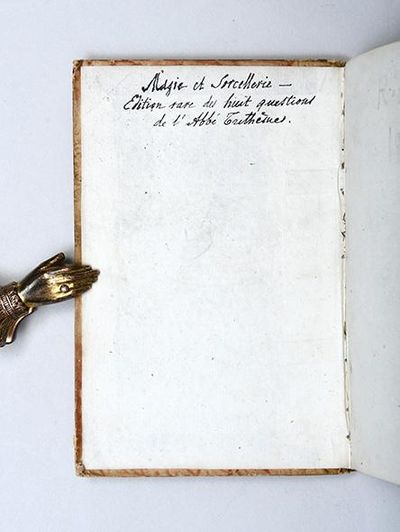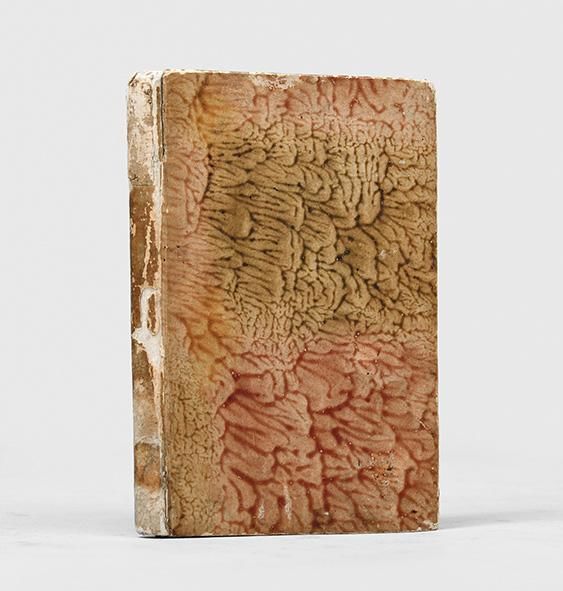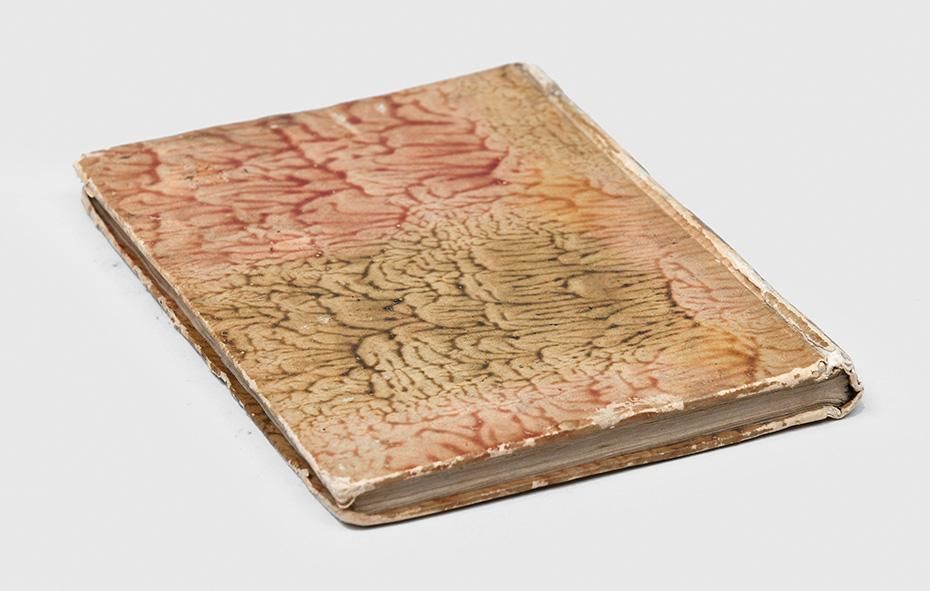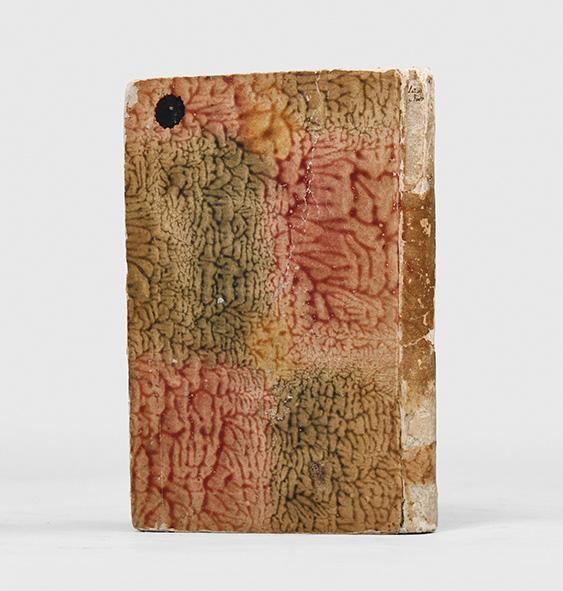Cologne: Melchior von Neuss,, 1534. A 16th-century vicar looks for answers to witchcraft and demonology Scarce first octavo edition, second overall, of this popular work on demonology and magic by one of the most prominent occultists of Renaissance Germany. Dedicated to Emperor Maximilian, the book addresses his concerns over magic and contains a detailed classification of demons. This copy has an appealing contemporary German ecclesiastic provenance and further signs of early readership. Johann Heidenberg (known as Trithemius after his native town, Trittenheim, 1462-1516) was a prolific writer on history, cryptography, and lexicography. Famous as a "magician" due to his occult inclinations, he identified himself as a "philomagus" (friend of magic) and admitted in a letter that "he himself has read many books of superstitious and even diabolical magic, but... this is necessary, if one is to learn to distinguish natural from illicit magic" (Thorndike, p. 550). In 1505, Tritemius met Emperor Maximilian I at the diet of Cologne, subsequently becoming his counsellor. Liber octo questionum ("Book of eight questions"), first published in 1515, was Trithemius's last work and contains his answers to eight theological questions the emperor asked him during their first meeting. Questions 3, 5, 6 and 7 concern witchcraft. They address miracles and whether they can be performed by magicians through pacts with demons, the source of magician's powers in relation to God and demons, and the justified existence of evil. The answer to question 6 (on "the power of witches") contains a classification of demons into six traditional types, according to the places where they reside: above the air "below the lunar sphere", in the air, on the earth, in the water, under the earth, and in the darkness. The work is also notable for including an early reference to America and its inhabitants who "as we are informed, never heard of the Christian religion", found in this edition on the verso of leaf B5. This copy has the manuscript ex libris "Hainricii Altenndorffer de Serlemspach vecarius" dated "de anno 1540" (i.e. of Heinrich Altendorfer of Serlempach vicarius, in the year 1540) on the last leaf. Altendorfer was vicar in the Cathedral of Passau between 1542 and 1545. He owned a substantial collection of books, some of which he gifted to the monastery in Passau (see Horcicka & Weber, p. 117). The seventh question (on the concept of evil) has underlinings in a similar ink, and are likely his own. A few later annotations, in a 17th-century hand, were added by a reader who analyzed the text in parallel with other related publications. These include, at foot of the title page, a note pointing out that Trithemius is mentioned in Labbe's Bibliotheca Bibliothecarum, 1682; another example, on leaf B5 verso, indicates that more information on the same topic can be found in the writings of "Obrechus", likely Ulrich Obrecht (1646-1701). This edition is scarce in commerce, with only two copies recorded at auction; there are no copies in the British Library. Small octavo (143 x 95 mm). Eighteenth-century marbled pulled paper boards, smooth spine, paper label lettered in ink, later endpapers. Wear to board edges, surface wear to spine with signs of subtle paper repair, consequent loss of lettering to label, remaining partially legible, light damp stains to contents, a couple of gatherings guarded at gutter at time of binding, margins closely trimmed without loss of text, still a very good copy. Adams T978; Caillet 10846; Sabin 97005; VD16 T1987. A. Horcicka & D. Weber, Mitteilungen des Vereines für Geschichte der Deutschen in Böhmen, vol. 45; Lynn Thorndike, A History of Magic and Experimental Science, Vol. II, 1923.


